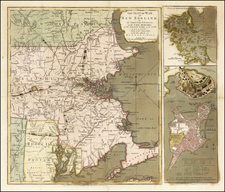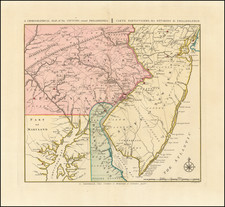Striking portrait of Marie Joseph Paul Yves Roch Gilbert du Motier, Marquis de Lafayette.
The portrait is accompanied by the excerpt of a letter written by Lafayette during his imprisonment in Silesia, part of Lafayette's saga during the French Revolution.
In early August 1792, General Lafayette, commanding the French Northern Army from Sedan, faced threats from the counter-revolutionary Coalition (Prussia, Austria, and French emigrants) aimed at overthrowing France's new constitutional order. Meanwhile, radical Jacobins within France also opposed the constitution, leading to a coup on August 19, 1792. Stripped of his command and facing execution, Lafayette fled on August 19, 1792, with key officers including César de Latour-Maubourg, Jean Bureaux de Pusy, and Alexandre de Lameth, intending to eventually reach the United States.
However, Lafayette's party was captured by Austrian-commanded Flemish troops in Rochefort, southern Belgium, despite initial assurances of safe passage. Initially, the group was to be detained at the citadel of Antwerp. However, Lafayette and the three officers were later taken to Luxembourg for a tribunal, which deemed them a significant ideological threat, resulting in their classification as "prisoners of state."
Lafayette's subsequent captivity lasted over five years across four prisons: the Prussian citadels of Wesel, Magdeburg, Neisse (Silesia), and the Austrian barracks-prison in Olmütz. His most notable stay was in Neisse, Silesia (today Nysa, Poland), from January 16, 1794 to May 17, 1794.
After Neisse, Lafayette was transferred to Olmütz (now Olomouc, Czech Republic), where he faced harsh conditions and severe isolation but also plotted an escape, which as attempted on November 8, 1794, orchestrated with the help of Justus Erich Bollmann and Francis Kinloch Huger, but failed due to a miscommunication, leading to Lafayette's recapture near Sternberg.
Lafayette was finally released on September 19, 1797 followed intense negotiations influenced by his wife Adrienne's plea to the emperor. His family, having suffered significantly, joined him in captivity for two years before their eventual release.
Despite an initial plan to reside in the United States, the Lafayette family remained in Europe due to his wife's deteriorating health, living in Denmark and Holland until Lafayette's discreet return to France in 1799 for a quiet retirement.











![[World Map with Portraits of Ferdinand Magellan, Willem Schouten, Francis Drake, Thomas Cavendish, Olivier van Noort and Joris van Speilbergen]](https://storage.googleapis.com/raremaps/img/small/90127.jpg)

![[ Florida Native Americans Cultivating & Planting ] Culturae & sationis ratio.](https://storage.googleapis.com/raremaps/img/small/81299.jpg)

![South Carolina and Parts Adjacent; Showing The Movements of the American and British Armies [from Ramsey's History of the Revolution in South Carolina]](https://storage.googleapis.com/raremaps/img/small/83798.jpg)
